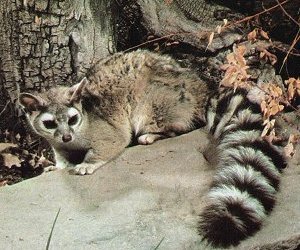
View from part way up Squaw Peak. The Phoenix skyline.

You can see in all directions from the top of the peak.

Squaw Peak is inside the Phoenix City Limits. It is 1.2 miles high and has an incline of about 100 feet per 1/10 mile, so it is VERY steep. The whole trail is groomed with rock steps and in a couple of places there are hand rails to help pull yourself up. There are many people that climb up and down the mountain as part of the work out regiem. There are some folks that daily run up and down several times. I guess it makes them feel "macho." I was just glad I could make it up and down without loosing my footing and falling to my death in the valley below.

We climbed it about 6:00 PM. We got to the top and just sat there with the breeze blowing and waited for the sun to go down. It was a cloudless sky in the west, but the east was beautifully colored as the clouds picked up the sunset hues. The whole horizon in the west turned golden and then orange. It was so beautiful! As the sky got darker, the lights in the city started coming up. We enjoyed the solitude and peace. We had our headlamps, so we could hike down in the dark. It was quite an adventure!

Just as the sun went down, this beautiful little creature stuck its head up. I have never seen anything like it and did not know what it was. Then another one came out. They scampered and played around the rocks and crevases. We had to come home and look it up on the internet. It is called a ring-tailed cat. Also called “ringtail” and “civet cat”, the ring-tailed cat is not a true cat. It is about 30 inches long, and half of that is tail. Although this animal has many of the customary habits of cats, it is most closely related to raccoons. Its long, bushy tail is its most conspicuous feature and the only outward resemblance to a raccoon. Its tail has alternating bands, eight black and eight white, and the tip is black. Its back is yellowish gray and its belly whitish. It is found in rocky canyons, foothills, peaks, caves and attics; and its den is typically found in rock crevices, shallow caves, hollow trees, and even in abandoned buildings. Even though it is an excellent climber, it spends little time off the ground, taking to the trees only to hunt roosting birds or their nests. The ring-tailed cat eats small mammals, birds, insects, lizards and fruit. In season, it does eat various fruits and berries. It is nocturnal and not often seen.
 View from part way up Squaw Peak. The Phoenix skyline.
View from part way up Squaw Peak. The Phoenix skyline.
 You can see in all directions from the top of the peak.
You can see in all directions from the top of the peak.
 Squaw Peak is inside the Phoenix City Limits. It is 1.2 miles high and has an incline of about 100 feet per 1/10 mile, so it is VERY steep. The whole trail is groomed with rock steps and in a couple of places there are hand rails to help pull yourself up. There are many people that climb up and down the mountain as part of the work out regiem. There are some folks that daily run up and down several times. I guess it makes them feel "macho." I was just glad I could make it up and down without loosing my footing and falling to my death in the valley below.
Squaw Peak is inside the Phoenix City Limits. It is 1.2 miles high and has an incline of about 100 feet per 1/10 mile, so it is VERY steep. The whole trail is groomed with rock steps and in a couple of places there are hand rails to help pull yourself up. There are many people that climb up and down the mountain as part of the work out regiem. There are some folks that daily run up and down several times. I guess it makes them feel "macho." I was just glad I could make it up and down without loosing my footing and falling to my death in the valley below.
 We climbed it about 6:00 PM. We got to the top and just sat there with the breeze blowing and waited for the sun to go down. It was a cloudless sky in the west, but the east was beautifully colored as the clouds picked up the sunset hues. The whole horizon in the west turned golden and then orange. It was so beautiful! As the sky got darker, the lights in the city started coming up. We enjoyed the solitude and peace. We had our headlamps, so we could hike down in the dark. It was quite an adventure!
We climbed it about 6:00 PM. We got to the top and just sat there with the breeze blowing and waited for the sun to go down. It was a cloudless sky in the west, but the east was beautifully colored as the clouds picked up the sunset hues. The whole horizon in the west turned golden and then orange. It was so beautiful! As the sky got darker, the lights in the city started coming up. We enjoyed the solitude and peace. We had our headlamps, so we could hike down in the dark. It was quite an adventure!
 Just as the sun went down, this beautiful little creature stuck its head up. I have never seen anything like it and did not know what it was. Then another one came out. They scampered and played around the rocks and crevases. We had to come home and look it up on the internet. It is called a ring-tailed cat. Also called “ringtail” and “civet cat”, the ring-tailed cat is not a true cat. It is about 30 inches long, and half of that is tail. Although this animal has many of the customary habits of cats, it is most closely related to raccoons. Its long, bushy tail is its most conspicuous feature and the only outward resemblance to a raccoon. Its tail has alternating bands, eight black and eight white, and the tip is black. Its back is yellowish gray and its belly whitish. It is found in rocky canyons, foothills, peaks, caves and attics; and its den is typically found in rock crevices, shallow caves, hollow trees, and even in abandoned buildings. Even though it is an excellent climber, it spends little time off the ground, taking to the trees only to hunt roosting birds or their nests. The ring-tailed cat eats small mammals, birds, insects, lizards and fruit. In season, it does eat various fruits and berries. It is nocturnal and not often seen.
Just as the sun went down, this beautiful little creature stuck its head up. I have never seen anything like it and did not know what it was. Then another one came out. They scampered and played around the rocks and crevases. We had to come home and look it up on the internet. It is called a ring-tailed cat. Also called “ringtail” and “civet cat”, the ring-tailed cat is not a true cat. It is about 30 inches long, and half of that is tail. Although this animal has many of the customary habits of cats, it is most closely related to raccoons. Its long, bushy tail is its most conspicuous feature and the only outward resemblance to a raccoon. Its tail has alternating bands, eight black and eight white, and the tip is black. Its back is yellowish gray and its belly whitish. It is found in rocky canyons, foothills, peaks, caves and attics; and its den is typically found in rock crevices, shallow caves, hollow trees, and even in abandoned buildings. Even though it is an excellent climber, it spends little time off the ground, taking to the trees only to hunt roosting birds or their nests. The ring-tailed cat eats small mammals, birds, insects, lizards and fruit. In season, it does eat various fruits and berries. It is nocturnal and not often seen.

1 comment:
Those pictures are awesome. What a fun experience. The kids would love to see that animal in real life.
Post a Comment